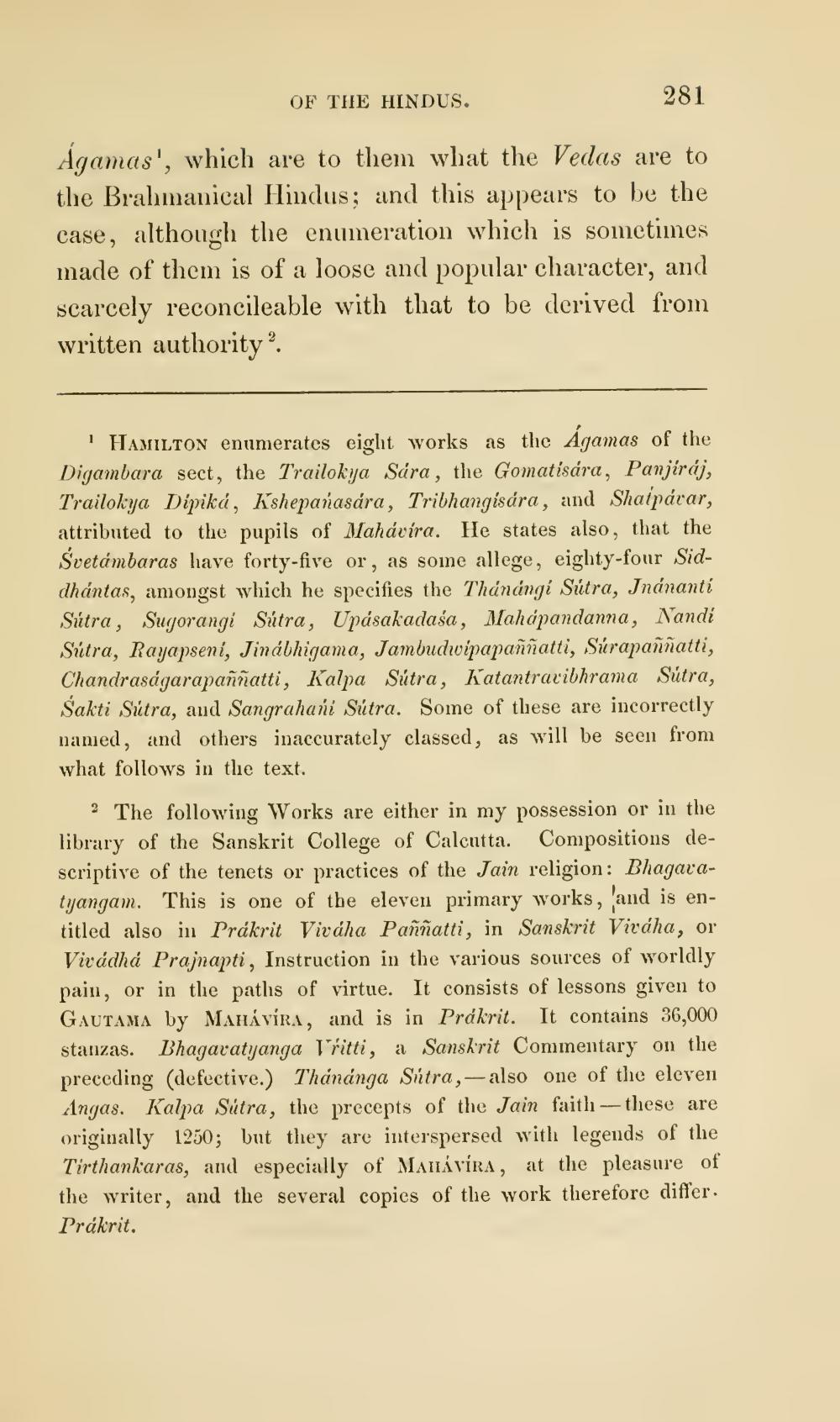________________
OF THE HINDUS.
281
Agamas', which are to them what the Vedas are to the Brahmanical Hindus; and this appears to be the case, although the enumeration which is sometimes made of them is of a loose and popular character, and scarcely reconcileable with that to be derived from written authority?
| HAMILTON enumerates eight works as the Agamas of the Digambara sect, the Trailokya Sára, the Gomatisára, Panjiráj, Trailokya Dipiki, Kshepanasára, Tribhangisdra, and Shaipávar, attributed to the pupils of Mahávira. He states also, that the Svetámbaras have forty-five or, as some allege, eighty-four Siddhántas, amongst which he specifies the Thánúngi Sútra, Jnánanti Sutra, Sugorangi Sútra, Upásakadaśa, Mahápandanna, Nandi Sútra, Rayapseni, Jinábhigama, Jambudwipapaññatti, Súrapaññatti, Chandraságarapaññatti, Kalpa Sútra, Katantravibhrama Sútra, Sakti Sutra, aud Sangrahani Sútra. Some of these are incorrectly named, and others inaccurately classed, as will be seen from what follows in tlie text.
? The following Works are either in my possession or in the library of the Sanskrit College of Calcutta Compositions descriptive of the tenets or practices of the Jain religion: Bhagavatyangam. This is one of the eleven primary works, and is entitled also in Prakrit Vivdha Paññatti, in Sanskrit Vivdha, or Vivádhá Prajnapti, Instruction in the various sources of worldly pain, or in the paths of virtue. It consists of lessons given to GAUTAMA by Manivira, and is in Prakrit. It contains 36,000 stanzas. Bhagavatyanga Iritti, a Sanskrit Commentary on the preceding (defective.) Thándnga Sutra, - also one of the eleven Angas. Kalpa Sútra, the precepts of the Jain faith -- these are originally 1250; but they are interspersed with legends of the
Tirthankaras, and especially of Manávira, at the pleasure of the writer, and the several copies of the work therefore differ. Prakrit.




